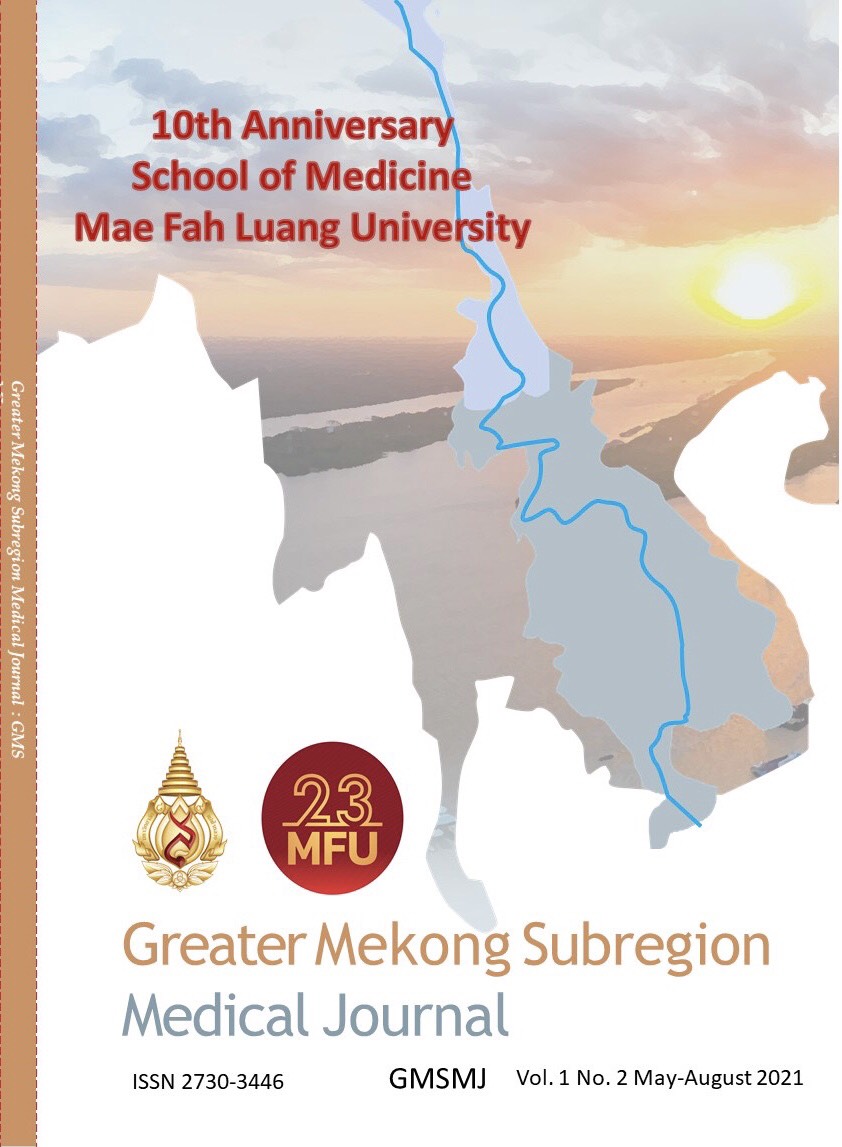How to Improve Learning Achievement of Medical Students Regarding Interpretation of Hematology Slides
Keywords:
Hematology slides, Teaching, Examination, Learning achievementAbstract
Background: It is essential that Thai medical students learn how to interpret abnormalities of red blood cells, white blood cells and platelets from peripheral blood smears. Following this they need collate this information and make a correct diagnosis of the common hematologic diseases found in Thailand. Because of time constraints, high student to teacher ratios, there being relatively few hematology and clinical pathology specialty clinical teachers, there is a particular need to trial various teaching methods, in order to improve learning outcomes, in relation to the ability of the students to correctly interpret hematology slides.
Objective: The author would like to know the efficiency of different learning methods by using an immediate answer feedback following each quiz of peripheral blood hematology slides. With this method, the author would like to measure the progress of the medical students by comparing scores from the tests.
Methods: Before learning, the medical teacher gave the third year medical students a paper on how to interpret a peripheral blood smear, for self-study. To promote active learning, 2 days after self-study, the medical teacher presented the first session, called demonstration slides (14 diseases or conditions) as seen using a light microscope. This was conducted in an OSCE-examination style, 5 minutes per station, in order to ensure that all students examined the slides during the session. There was no formal marking of this session. Immediately after the demonstration test, the teacher gave the answers and pictures from the light microscope online to all students, via Google classroom. In the afternoon of the same day, the teacher conducted a second quiz, with slides of 14 different diseases and collected the scores from each student. Again, following completion the answers were revealed. The students were then able to check their results via Google classroom or LINE social media. One week later, at the time of final examination, slides of 23 diseases (some diseases were repeated but different questions or from different patients) were presented, the teacher then compared the scores from this last test to the second test and the answer was again sent to all students via the same channels. One way ANOVA test was used for analyzing mean differences between tests with p-value < 0.05 at 95% confidential interval (CI) was considered to be significant.
Results: There were 32 medical students in the class. Thirty of 32 students (93.8%) showed improved scores from the first to the second test. Thirty of 32 students (93.8%) had improvement from the second test to the final examination. Mean points + S.D. scores from the first test were 2.33 + 0.97 compared to 4.33 + 0.97 in the second test and 6.07 + 0.81 in the final examination. All 32 students achieved significantly improved scores (p<0.001) from the first to the final test, confirming increased learning achievement.
Conclusion: The examination-based teaching was shown to be an effective way to improve the learning of hematology slides. This teaching concept was stimulating, consumed less time, was cost-effective, had no requirement for high technology equipment and the students were able to learn about many diseases at the same time. The immediate feedback of answers, linked to pictures from the light microscope, was a key factor leading to this success. However, the retention of knowledge needs either repetitive examination or promotion of active learning, by consistent self-study, depending on the needs of different individuals.
References
Boursicot K, Roberts T. How to set up an OSCE. Clinical Teacher 2005; 2 (1): 16-20.
Patrício MF, Julião M, Fareleira F, Carneiro AV. Is the OSCE a feasible tool to assess competencies in undergraduate medical education? Med Teach 2013; 35 (6): 503-14.
Tantiworawit A, Chaimongkol B, Norasetthada L, Rattarittamrong E, Ukarapol N. OSCE with demonstrated constructive feedback as the effective teaching method for blood smear interpretation skill. AMEE 2015 Abstract book #3CC18 (233840), p 99.
Pengprakhon R, Chindavech N, Aumkaew S, Thienwuttiwong T, Silakul W. Formative evaluation enhances clinical skill of interpretation of peripheral blood smear in medical students. AMEE 2017 Abstract book #5EE10 (1705), p 333.






